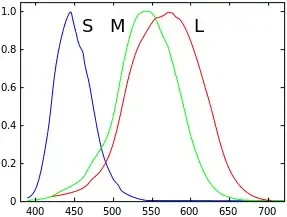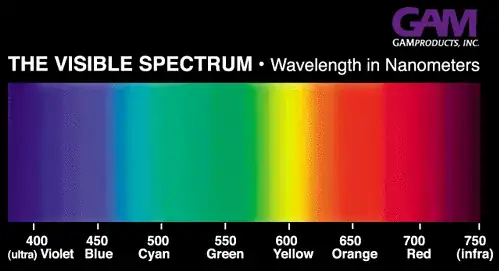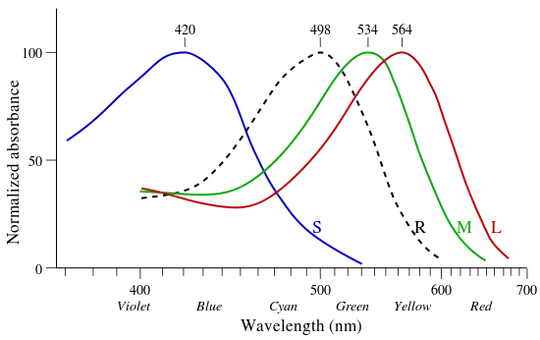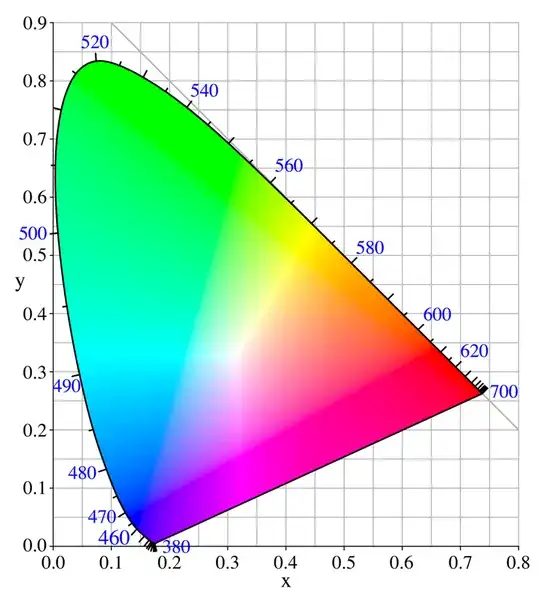Our eyes contain 3 photoreceptor cells (cones) to perceive three wavelength ranges of light. Here is a visual representation of the wavelengths by these receptors (S, M and L).

So if we have light of 440 nm, it results in the color blue. If we have light of 540 nm, it results in the color green. If we see light of 650 nm, it results in the color red.
I think I understand our ability of the brain to mix the results of the signals of these receptors, producing colors like yellow. However, what I do not understand is how the color spectrum is displayed like this:

Given that spectrum, I would suggest that the color 'blue' is actually a mix between the receptors S and M. And the pure result of activating the S-receptor would result in the color 'purple' (I would describe the color in the left of the image as purple, right). Therefore, the receptor colors should instead be RGP (red, green, purple) instead of RGB (red, green, blue).
However, there is one problem with this which I cannot explain. How come that mixing red light with blue light also results in purple light? How is it possible that purple light can be achieved through mixing (additively) blue and red light, just as going to the shortest wavelength boundary of what we can see (from blue to ultraviolet via purple)?
So the actual problem here is:
- Purple is the color at the very shortest wavelength we can see.
- Purple is an additive mix between what we see as red light and blue light.
That just doesn't make any sense. I don't see how our brain can possibly perceive this as being the same color. Shouldn't both purple colors actually be different colors (thus we would have a new different color for that)?
UPDATE: Pure activation of the S-cone (blue) may actually give violet instead of blue. That means that the color blue contains also a bit activation from the M- and L-cones (green and red). So then the "blue-est blue" is actually violet, not blue. This confusion originates from the RGB-system (and other sources) that assume blue as being a primary color, whereas violet would perhaps be more accurate! Further details can be found in the accepted answer.
The line of purples may further help to understand what purple/magenta/violet really is.

